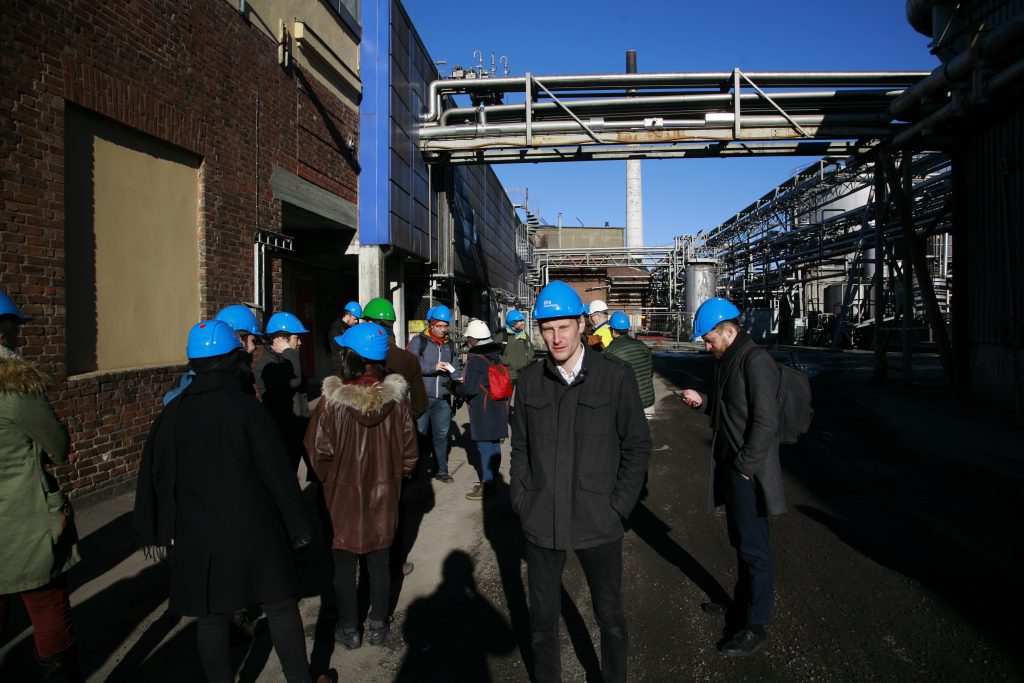The last day spent in Norway is a last tour de force: a look at the future, a look back into the past, thinking together about the present.
In the morning we go south from the city center to Innovasjons Park which is in a sense the most exciting location we have seen so far. Not necessarily because of how any kind of artistic project could find an ideal venue here (though this may be true), but because the enormous compound shows us the unlimited possibilities inherent in revived postindustrial spaces. According to the masterplan for revitalizing the park any and all units no longer under use in the large industrial area will one by one be handed over to the experts of the cultural and innovative industry. (I was shocked by the sum set aside for this project in Norwegian crowns, it was so large I had to recount it again and again.) The completed sections have great promise, and can be interpreted as bravely forging ahead: a possible way to rehabilitate industrial zones condemned to demolition is to find new communal functions for these areas.

Our next location is a haunted high-rise building in the French-sounding Cicignon district of Fredrikstad. A single, sad security guard stands watch beside the one-time hospital. As we are slowly walking up the stairs of the large building complex I am envisioning the best scenes of various zombie movies set in hospitals, gazing into the dim corridors, which do not really show signs of decay (yet): it seems like both doctors and patients left the building only a couple of days ago. Standing on the rooftop, on a ruined helicopter pad we get an exhilarating view of the city, and even farther off, the Oslo fjord. This is the highest point in Fredrikstad. The building has been used to house refugees, but believing in the rehabilitative power of art, new circus artists have been let loose on the various rooftops of the compound.

From the end of the 19th century the Fredrikstad Mekaniske Verksted operated for about a hundred years, with more than five hundred ships being built in the shipyard during this time. The upturn in East-Asian shipbuilding brought about the decline of the industry here, and in Scandinavia at large. Though there are people working on the premises to this day, the manufacturing halls are empty, and the rusted ship hulls, the fittings reclaimed by nature, and the emblematic cranes standing in the landscape are all testament to the glorious days of old.

We are free to do anything we want in the afternoon and the last night, but in reality our siesta subtly changes into solitary and joint thinking about PICTURE Budapest – Østfold. The farewell dinner becomes one all about work. After the intense two-weeks spent together every artist outlines where they would like to work in Csepel, Moss or Fredrikstad, and also what kind of artistic intervention they can imagine in their chosen location within the limits of the project. I do not want to spoil anything, but these plans are both enlightening and inspiring. There are those among the group who chose to continue with their original ideas, others will most probably band together to create something new, while there are artists who were struck by inspiration at one of the sites, just then realizing what they would have to create.
Anyhow, now is the time for a couple of day’s “rest” so that we can continue our work in the second half of the project, in Norway at the end of March, and in Csepel in the middle of April.
Text by Tamás Jászay
Translated by Dávid Cseh